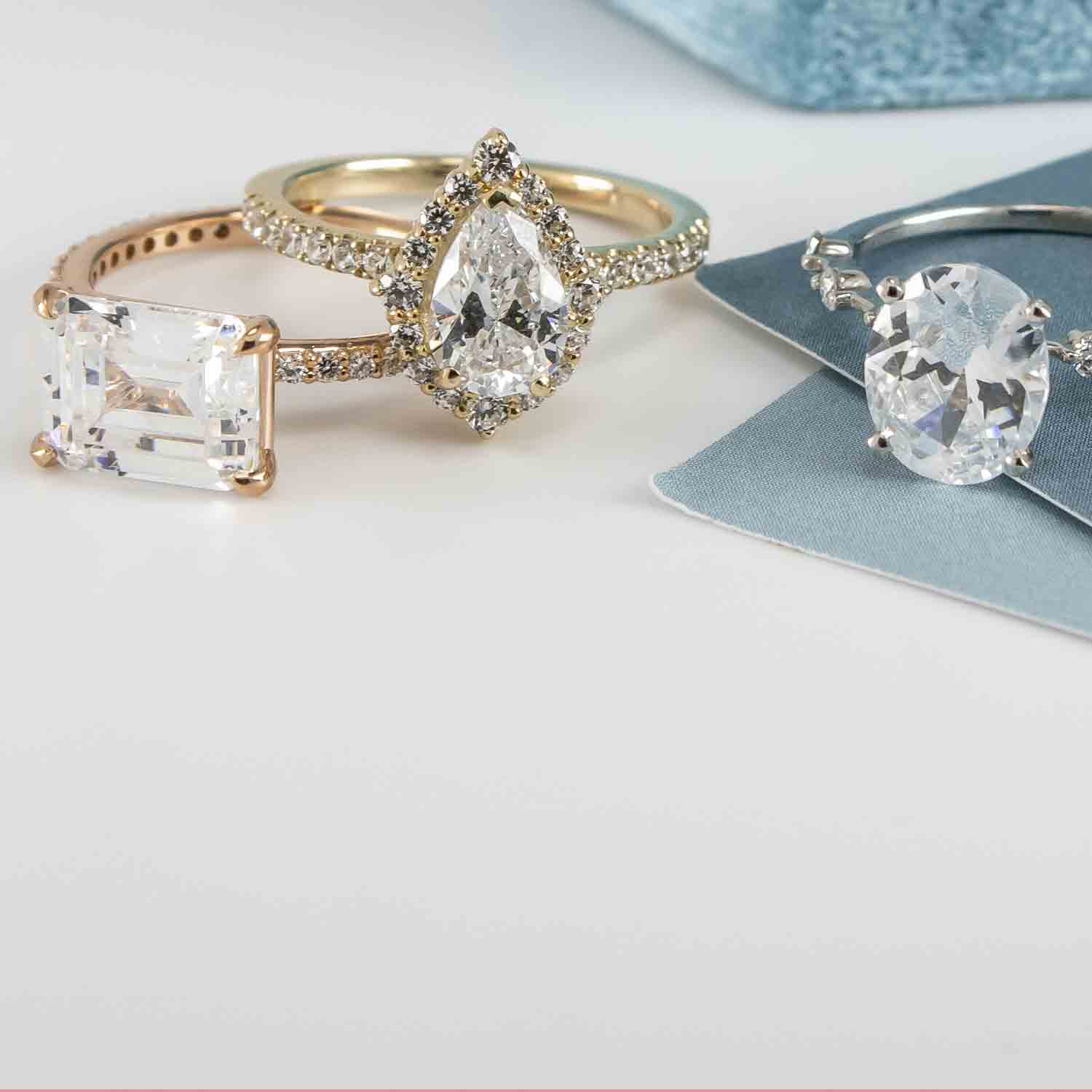White Sapphire vs. Diamond: A Comprehensive Comparison of Lab-Created Diamonds
September 5, 2024In the realm of fine jewelry, the choice between white sapphires and diamonds—particularly lab-created diamonds—is both intriguing and complex. Each gemstone possesses its own unique attributes, offering distinct advantages depending on individual preferences and budget considerations. This detailed analysis aims to explore the key differences and similarities between white sapphire vs diamond, with a particular focus on the burgeoning field of lab-created diamonds.
White Sapphires: A Detailed Overview
White sapphires are a variant of corundum, the same mineral family that includes the more colorful sapphire varieties. These gemstones are celebrated for their clarity and durability, though they differ significantly from diamonds in several respects.
Brilliance and Sparkle
While white sapphires exhibit a notable brilliance, their sparkle tends to be less intense than that of diamonds. This difference arises from the fact that sapphires and diamonds have distinct refractive properties. Diamonds are renowned for their extraordinary brilliance due to their high refractive index, which means they reflect light exceptionally well. In contrast, white sapphires, though luminous, do not achieve the same level of brilliance. Their sparkle is more subdued, offering a softer, subtler glow.
Hardness and Durability
White sapphires are highly durable, with a hardness rating of 9 on the Mohs scale. This rating makes them highly resistant to scratches and suitable for everyday wear, though they are slightly less hard than diamonds, which rate a perfect 10. The difference in hardness means that while white sapphires are robust and long-lasting, they are not entirely immune to scratches over time.
Color and Clarity
The allure of white sapphires lies in their clarity and colorlessness. Unlike diamonds, which can exhibit various hues, white sapphires are prized for their pure, transparent appearance. The absence of color makes them an excellent choice for those who prefer a more understated, elegant look. White sapphires are also known for their clarity, though they may occasionally display small inclusions, which are generally less visible to the naked eye compared to diamonds.
Diamonds: An In-Depth Examination
Diamonds have long been celebrated for their unmatched brilliance and exceptional qualities. Understanding the unique characteristics of diamonds can help in appreciating why they are often considered the ultimate gemstone choice.
Brilliance and Sparkle
Diamonds are renowned for their unparalleled brilliance and fire, attributed to their high refractive index and exceptional light dispersion. The cut of a diamond significantly influences its sparkle, with the most popular cuts, such as the round brilliant, designed to maximize light reflection and create an impressive display of brilliance. The intense sparkle and fire of diamonds are unrivaled by other gemstones, including white sapphires.
Hardness and Durability
Diamonds are the hardest natural substance on Earth, with a Mohs hardness rating of 10. This extreme hardness means that diamonds are highly resistant to scratches and damage, making them an ideal choice for everyday wear, particularly for engagement rings and other fine jewelry. The durability of diamonds ensures that they maintain their brilliance and luster over time, even with frequent use.
Color and Clarity
Diamonds come in a wide range of colors, from completely colorless to shades of yellow and brown. The color grade of a diamond can significantly impact its value, with colorless diamonds being the most sought after. Additionally, diamonds are evaluated for clarity, which refers to the presence of internal or external flaws, known as inclusions and blemishes. Higher clarity grades indicate fewer imperfections, enhancing the overall appearance and value of the diamond.
Lab-Created Diamonds: A Modern Innovation
Lab-created diamonds have emerged as a revolutionary alternative to natural diamonds, offering the same physical and chemical properties as their natural counterparts. Understanding the benefits and characteristics of lab-created diamonds can provide valuable insights for those considering this modern option.
What Are Lab-Created Diamonds?
Lab-created diamonds are produced using advanced technology that replicates the natural diamond formation process. These diamonds possess the same chemical composition, crystal structure, and physical properties as natural diamonds. The primary difference lies in their origin: lab-created diamonds are synthesized in controlled environments, whereas natural diamonds are formed over millions of years deep within the Earth.
Brilliance and Quality
Lab-created diamonds exhibit the same exceptional brilliance and fire as natural diamonds. The technology used to create these diamonds ensures that they match or even surpass the quality of natural diamonds in terms of light reflection and sparkle. Consumers can expect the same level of brilliance, making lab-created diamonds a compelling choice for those seeking high-quality gemstones.
Cost and Environmental Impact
One of the significant advantages of lab created diamonds is their cost-effectiveness. Lab-created diamonds are typically less expensive than their natural counterparts, offering a more budget-friendly option without compromising on quality. Additionally, lab-created diamonds are considered more environmentally sustainable, as their production does not involve the extensive mining operations associated with natural diamonds.
Conclusion: Making the Right Choice
When choosing between white sapphires and diamonds, especially in the context of lab-created diamonds, it is essential to consider individual preferences and priorities. White sapphires offer a unique, understated elegance with excellent durability, making them a suitable alternative for those seeking a more subtle gemstone. On the other hand, diamonds—whether natural or lab-created—provide unmatched brilliance and durability, appealing to those who value exceptional sparkle and longevity.















